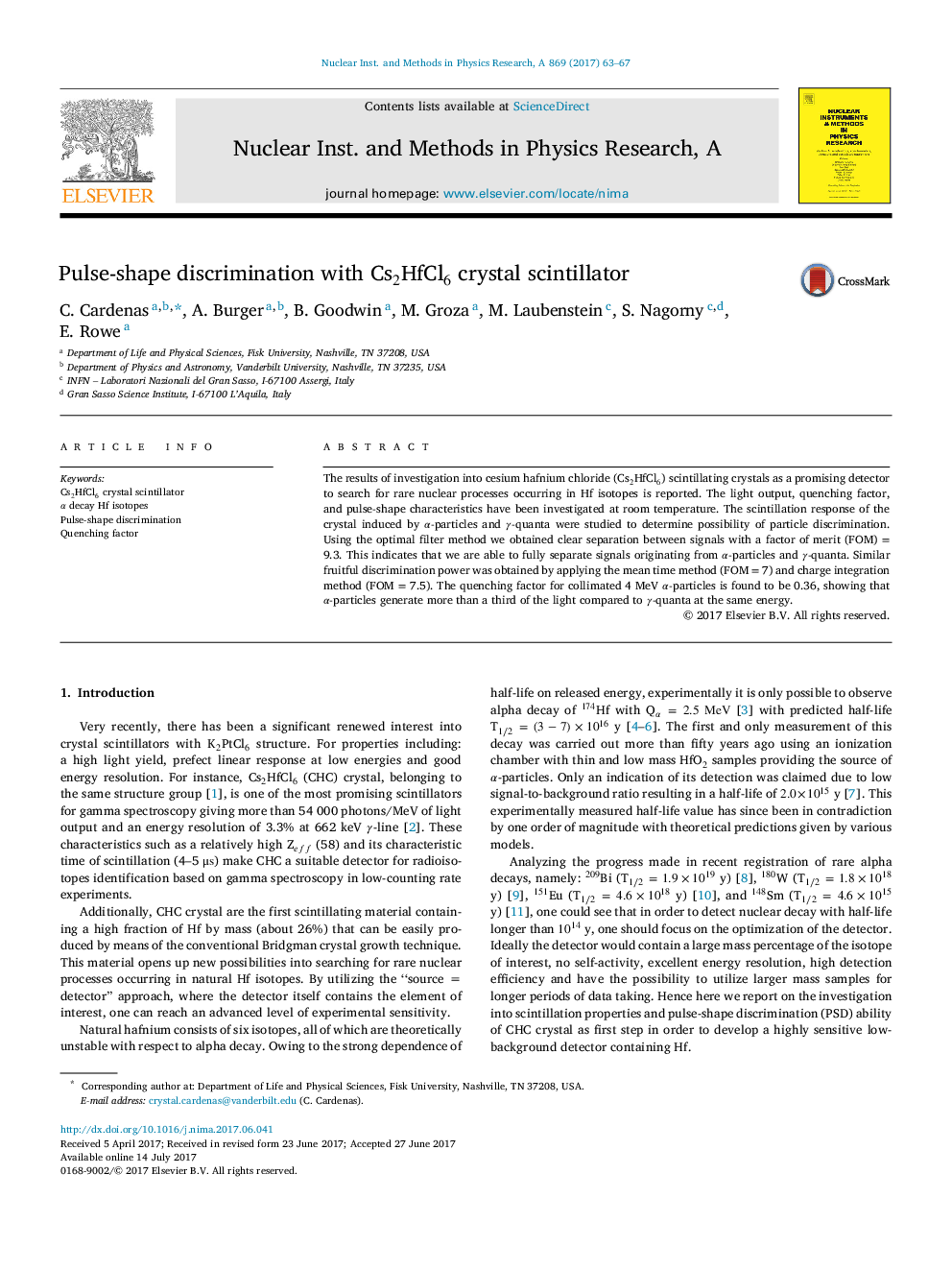| Article ID | Journal | Published Year | Pages | File Type |
|---|---|---|---|---|
| 5492630 | Nuclear Instruments and Methods in Physics Research Section A: Accelerators, Spectrometers, Detectors and Associated Equipment | 2017 | 5 Pages |
Abstract
The results of investigation into cesium hafnium chloride (Cs2HfCl6) scintillating crystals as a promising detector to search for rare nuclear processes occurring in Hf isotopes is reported. The light output, quenching factor, and pulse-shape characteristics have been investigated at room temperature. The scintillation response of the crystal induced by α-particles and γ-quanta were studied to determine possibility of particle discrimination. Using the optimal filter method we obtained clear separation between signals with a factor of merit (FOM) = 9.3. This indicates that we are able to fully separate signals originating from α-particles and γ-quanta. Similar fruitful discrimination power was obtained by applying the mean time method (FOM = 7) and charge integration method (FOM = 7.5). The quenching factor for collimated 4 MeV α-particles is found to be 0.36, showing that α-particles generate more than a third of the light compared to γ-quanta at the same energy.
Related Topics
Physical Sciences and Engineering
Physics and Astronomy
Instrumentation
Authors
C. Cardenas, A. Burger, B. Goodwin, M. Groza, M. Laubenstein, S. Nagorny, E. Rowe,
